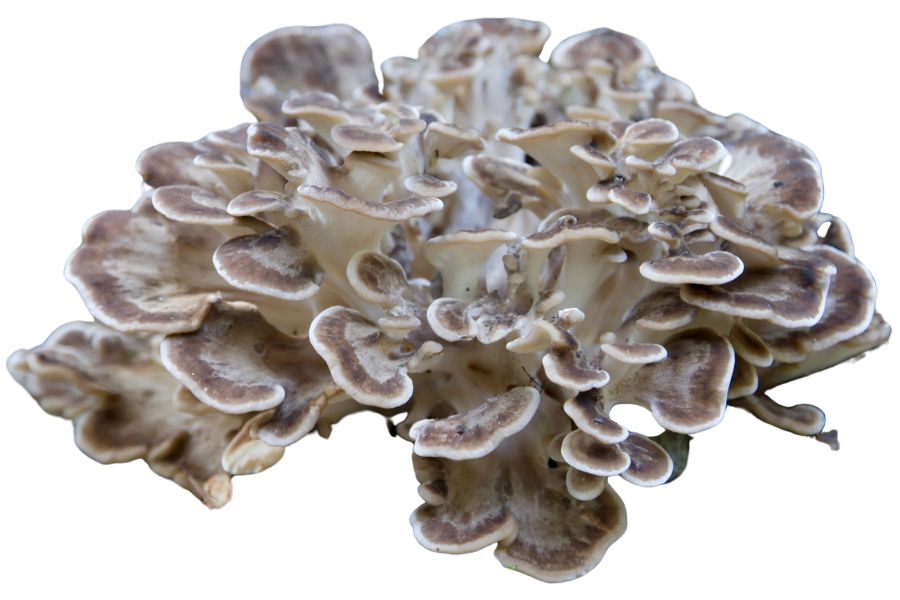Michigan’s woods and backroads hold some highly sought-after wild edibles. The state’s cold springs are perfect for tender ramps, and its open meadows can hide large patches of Jerusalem artichoke. In some years, you might even stumble on groundnut vines tangled in the brush near creeks.
What makes these plants so valuable isn’t just that they taste good. Some can store for months, others show up for only a few weeks, and a few are used in high-end restaurants around the world. There are even native species here that were once relied on as staple foods.
Most people pass right by these without realizing what they’re looking at. But there’s a whole category of wild edibles in Michigan that goes far beyond the common finds. Once you understand what to look for, you can walk away with a much broader and more valuable range of wild ingredients.
What We Cover In This Article:
- What Makes Foreageables Valuable
- Foraging Mistakes That Cost You Big Bucks
- The Most Valuable Forageables in the State
- Where to Find Valuable Forageables in the State
- When to Forage for Maximum Value
- The extensive local experience and understanding of our team
- Input from multiple local foragers and foraging groups
- The accessibility of the various locations
- Safety and potential hazards when collecting
- Private and public locations
- A desire to include locations for both experienced foragers and those who are just starting out
Using these weights we think we’ve put together the best list out there for just about any forager to be successful!
A Quick Reminder
Before we get into the specifics about where and how to find these plants and mushrooms, we want to be clear that before ingesting any wild plant or mushroom, it should be identified with 100% certainty as edible by someone qualified and experienced in mushroom and plant identification, such as a professional mycologist or an expert forager. Misidentification can lead to serious illness or death.
All plants and mushrooms have the potential to cause severe adverse reactions in certain individuals, even death. If you are consuming wild foragables, it is crucial to cook them thoroughly and properly and only eat a small portion to test for personal tolerance. Some people may have allergies or sensitivities to specific mushrooms and plants, even if they are considered safe for others.
The information provided in this article is for general informational and educational purposes only. Foraging involves inherent risks.
What Makes Foreageables Valuable
Some wild plants, mushrooms, and natural ingredients can be surprisingly valuable. Whether you’re selling them or using them at home, their worth often comes down to a few key things:
The Scarcer the Plant, the Higher the Demand
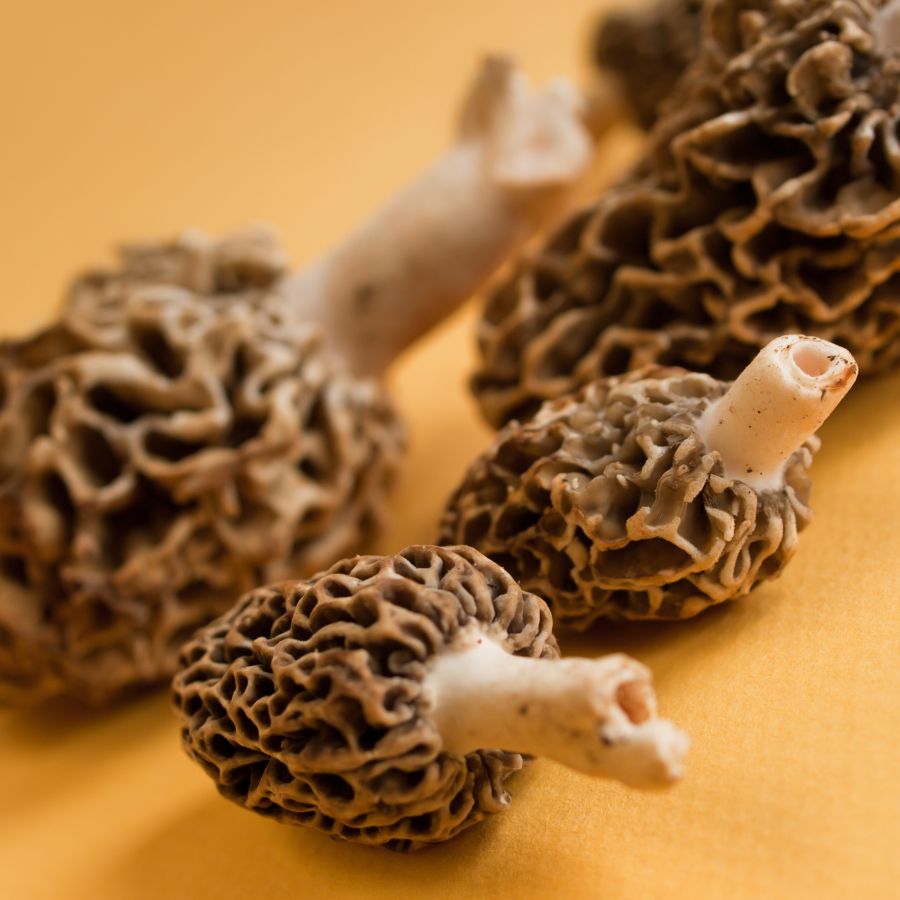
Some valuable forageables only show up for a short time each year, grow in hard-to-reach areas, or are very difficult to cultivate. That kind of rarity makes them harder to find and more expensive to buy.
Morels, truffles, and ramps are all good examples of this. They’re popular, but limited access and short growing seasons mean people are often willing to pay more.
A good seasonal foods guide can help you keep track of when high-value items appear.
High-End Dishes Boost the Value of Ingredients
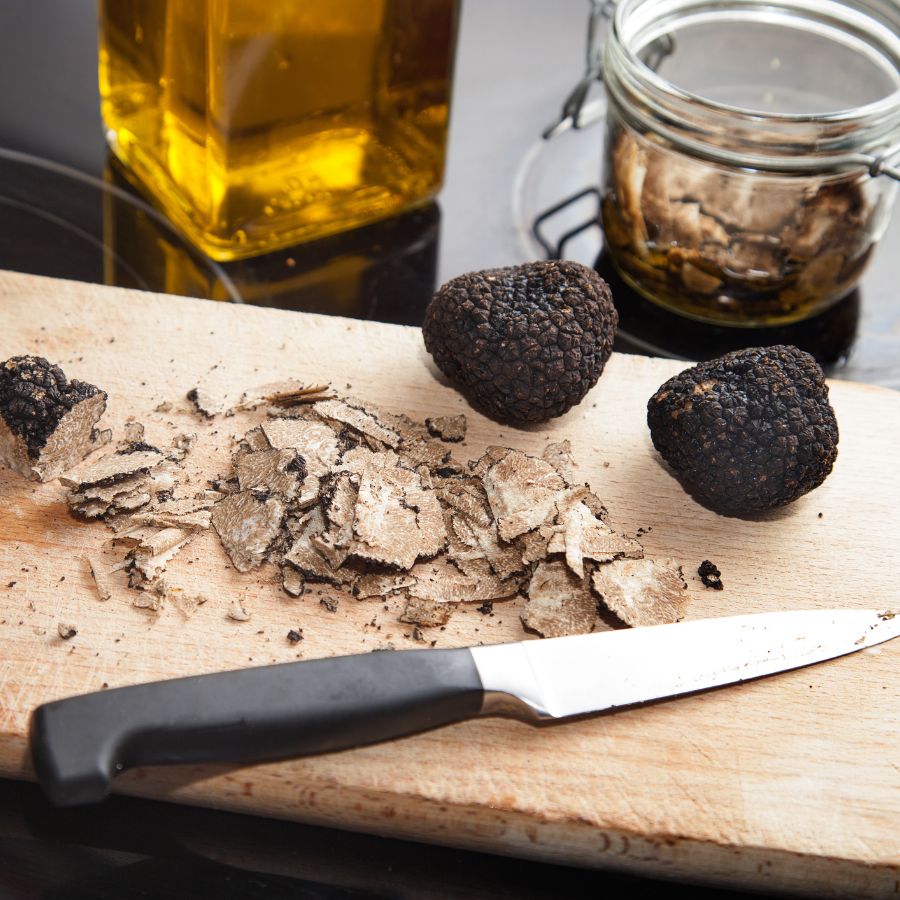
Wild ingredients that are hard to find in stores often catch the attention of chefs and home cooks. When something unique adds flavor or flair to a dish, it quickly becomes more valuable.
Truffles, wild leeks, and edible flowers are prized for how they taste and look on a plate. As more people try to include them in special meals, the demand—and the price—tends to rise.
You’ll find many of these among easy-to-identify wild mushrooms or herbs featured in fine dining.
Medicinal and Practical Uses Drive Forageable Prices Up
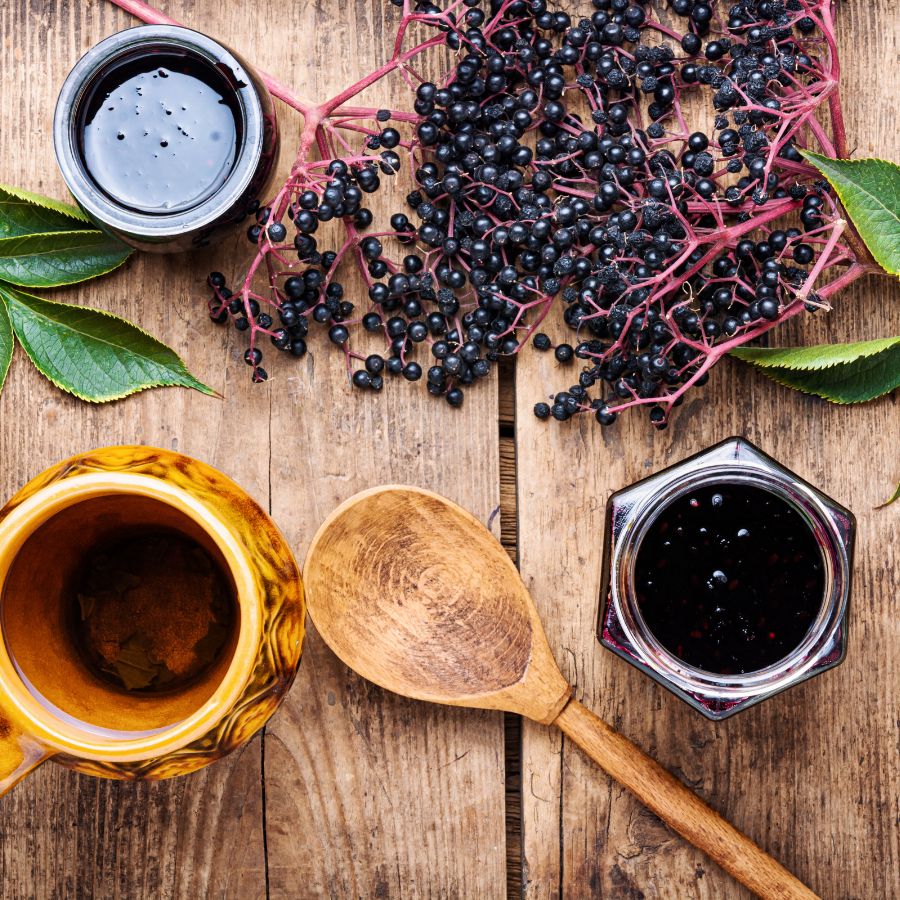
Plants like ginseng, goldenseal, and elderberries are often used in teas, tinctures, and home remedies. Their value comes from how they support wellness and are used repeatedly over time.
These plants are not just ingredients for cooking. Because people turn to them for ongoing use, the demand stays steady and the price stays high.
The More Work It Takes to Harvest, the More It’s Worth
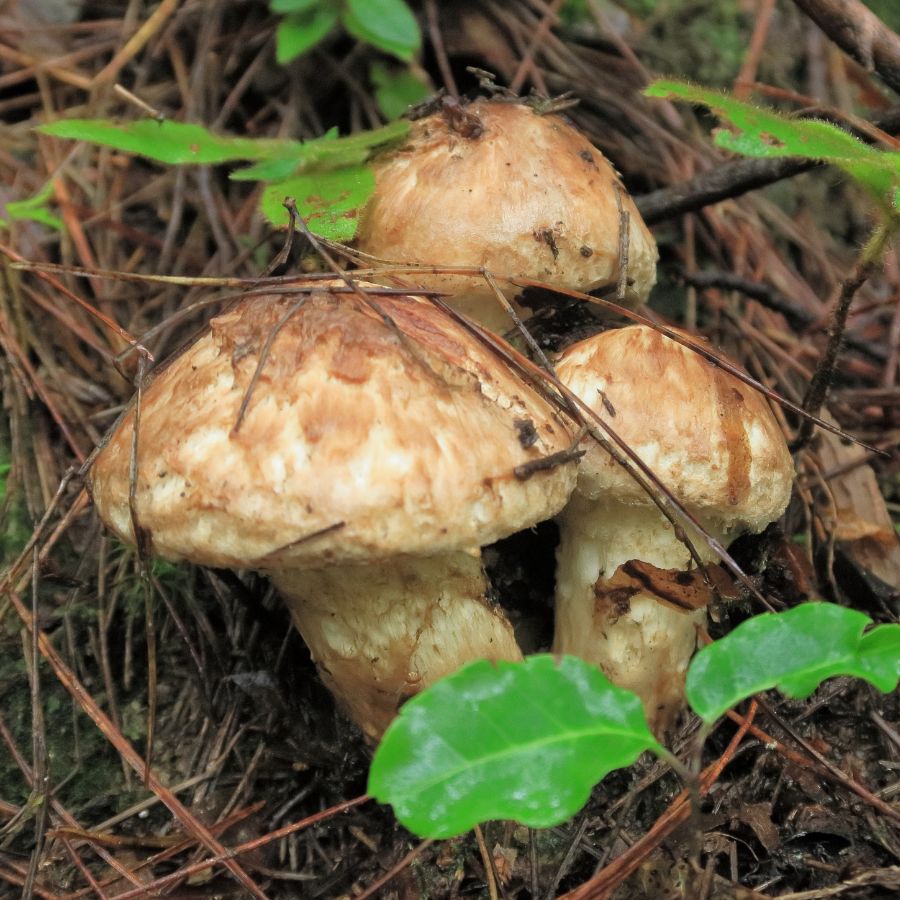
Forageables that are hard to reach or tricky to harvest often end up being more valuable. Some grow in dense forests, need careful digging, or have to be cleaned and prepared before use.
Matsutake mushrooms are a good example, because they grow in specific forest conditions and are hard to spot under layers of leaf litter. Wild ginger and black walnuts, meanwhile, both require extra steps for cleaning and preparation before they can be used or sold.
All of that takes time, effort, and experience. When something takes real work to gather safely, buyers are usually willing to pay more for it.
Foods That Keep Well Are More Valuable to Buyers
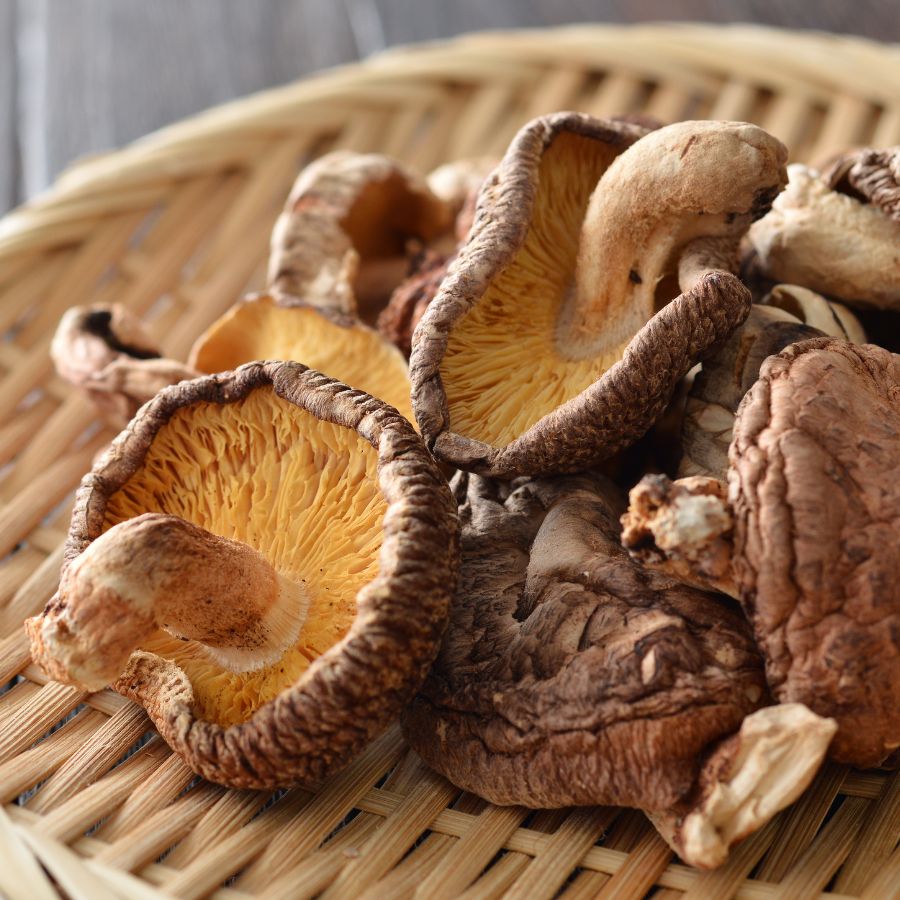
Some forageables, like dried morels or elderberries, can be stored for months without losing their value. These longer-lasting items are easier to sell and often bring in more money over time.
Others, like wild greens or edible flowers, have a short shelf life and need to be used quickly. Many easy-to-identify wild greens and herbs are best when fresh, but can be dried or preserved to extend their usefulness.
A Quick Reminder
Before we get into the specifics about where and how to find these mushrooms, we want to be clear that before ingesting any wild mushroom, it should be identified with 100% certainty as edible by someone qualified and experienced in mushroom identification, such as a professional mycologist or an expert forager. Misidentification of mushrooms can lead to serious illness or death.
All mushrooms have the potential to cause severe adverse reactions in certain individuals, even death. If you are consuming mushrooms, it is crucial to cook them thoroughly and properly and only eat a small portion to test for personal tolerance. Some people may have allergies or sensitivities to specific mushrooms, even if they are considered safe for others.
The information provided in this article is for general informational and educational purposes only. Foraging for wild mushrooms involves inherent risks.
Foraging Mistakes That Cost You Big Bucks
When you’re foraging for high-value plants, mushrooms, or other wild ingredients, every decision matters. Whether you’re selling at a farmers market or stocking your own pantry, simple mistakes can make your harvest less valuable or even completely worthless.
Harvesting at the Wrong Time
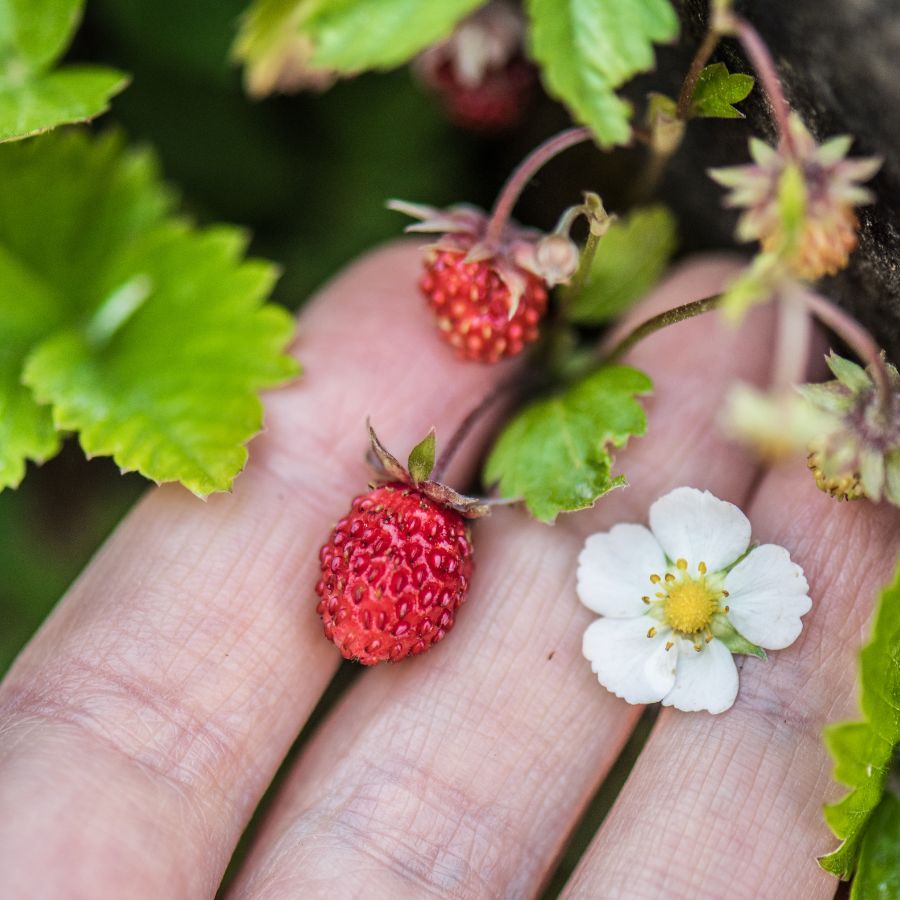
Harvesting at the wrong time can turn a valuable find into something no one wants. Plants and mushrooms have a short window when they’re at their best, and missing it means losing quality.
Morels, for example, shrink and dry out quickly once they mature, which lowers their weight and price. Overripe berries bruise in the basket and spoil fast, making them hard to store or sell.
Improper Handling After Harvest
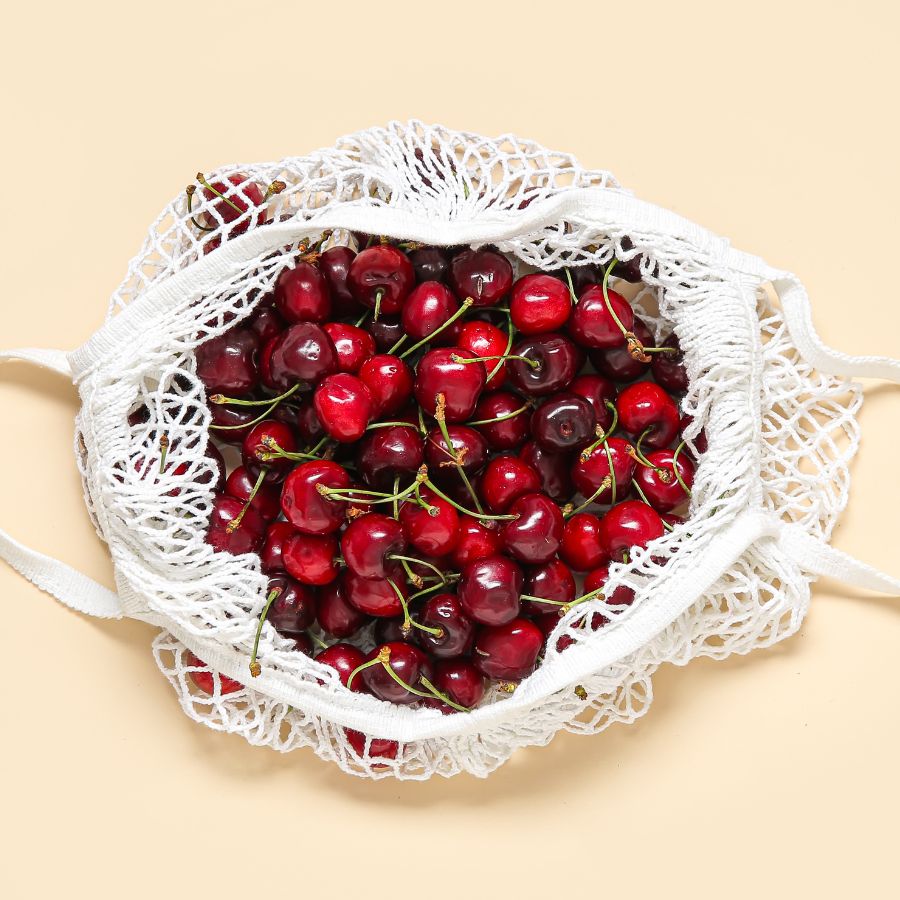
Rough handling can ruin even the most valuable forageables. Crushed mushrooms, wilted greens, and dirty roots lose both their appeal and their price.
Use baskets or mesh bags to keep things from getting smashed and let air circulate. Keeping everything cool and clean helps your harvest stay fresh and look better for longer.
This is especially important for delicate items like wild roots and tubers that need to stay clean and intact.
Skipping Processing Steps
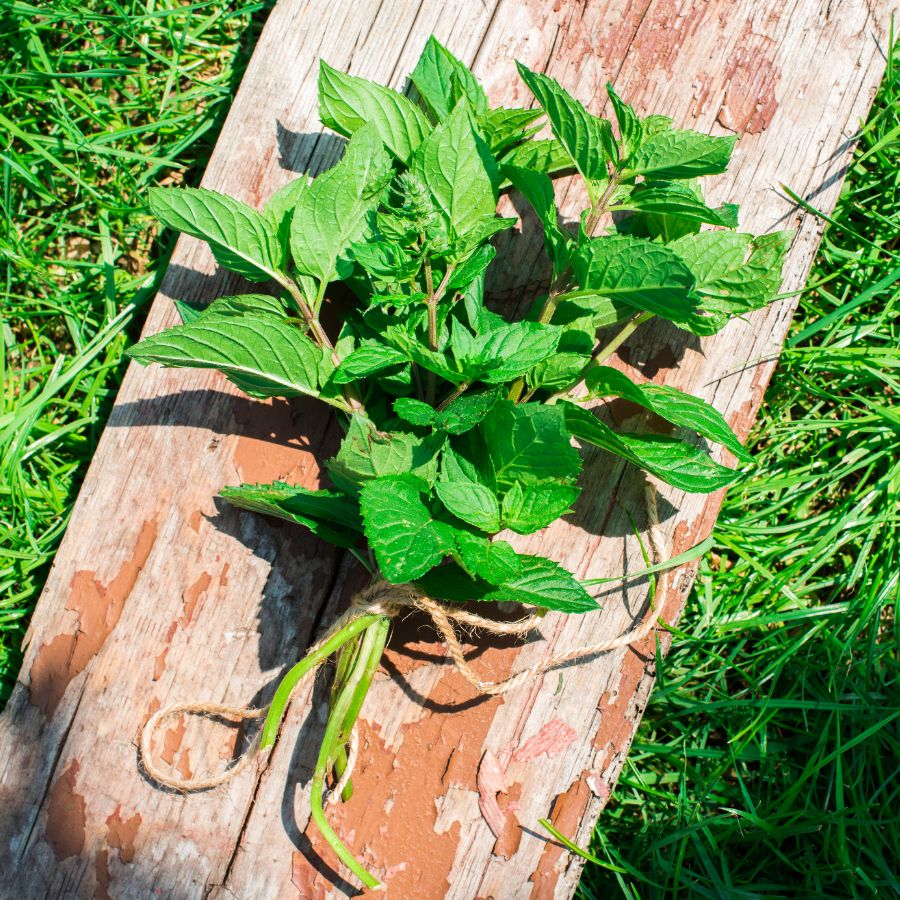
Skipping basic processing steps can cost you money. A raw harvest may look messy, spoil faster, or be harder to use.
For example, chaga is much more valuable when dried and cut properly. Herbs like wild mint or nettle often sell better when bundled neatly or partially dried. If you skip these steps, you may end up with something that looks unappealing or spoils quickly.
Collecting from the Wrong Area
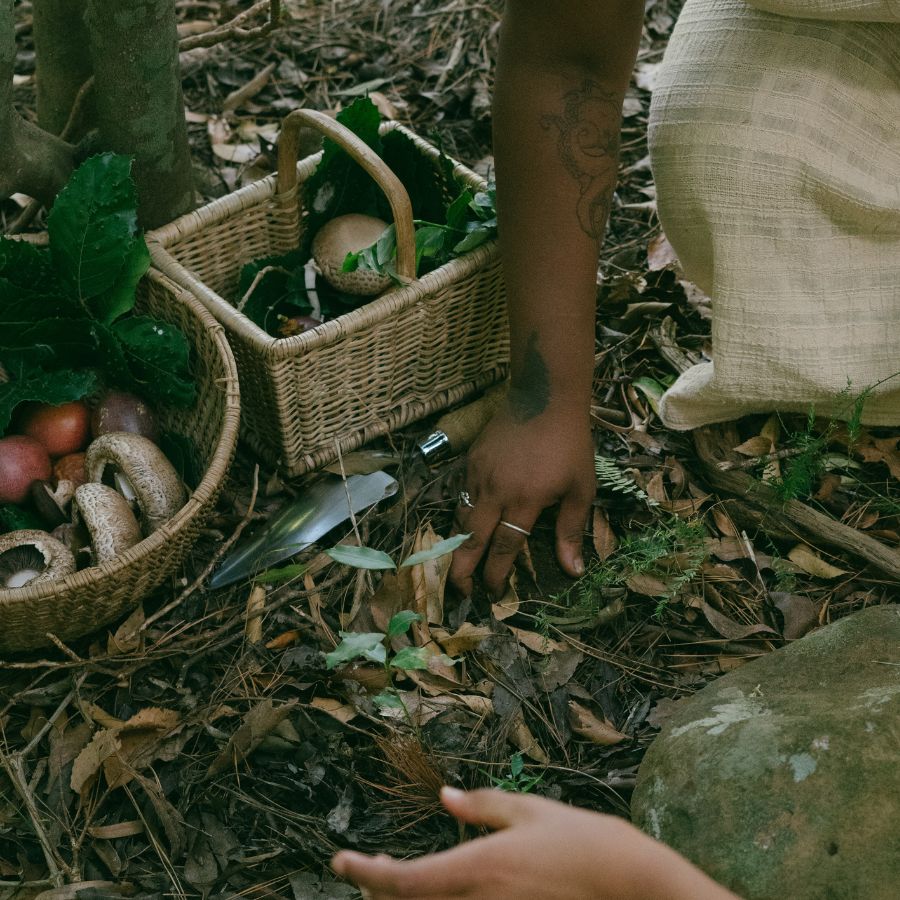
Harvesting in the wrong place can ruin a good find. Plants and mushrooms pulled from roadsides or polluted ground may be unsafe, no matter how fresh they look.
Buyers want to know their food comes from clean, responsible sources. If a spot is known for overharvesting or damage, it can make the whole batch less appealing.
These suburbia foraging tips can help you find overlooked spots that are surprisingly safe and productive.
Not Knowing the Market
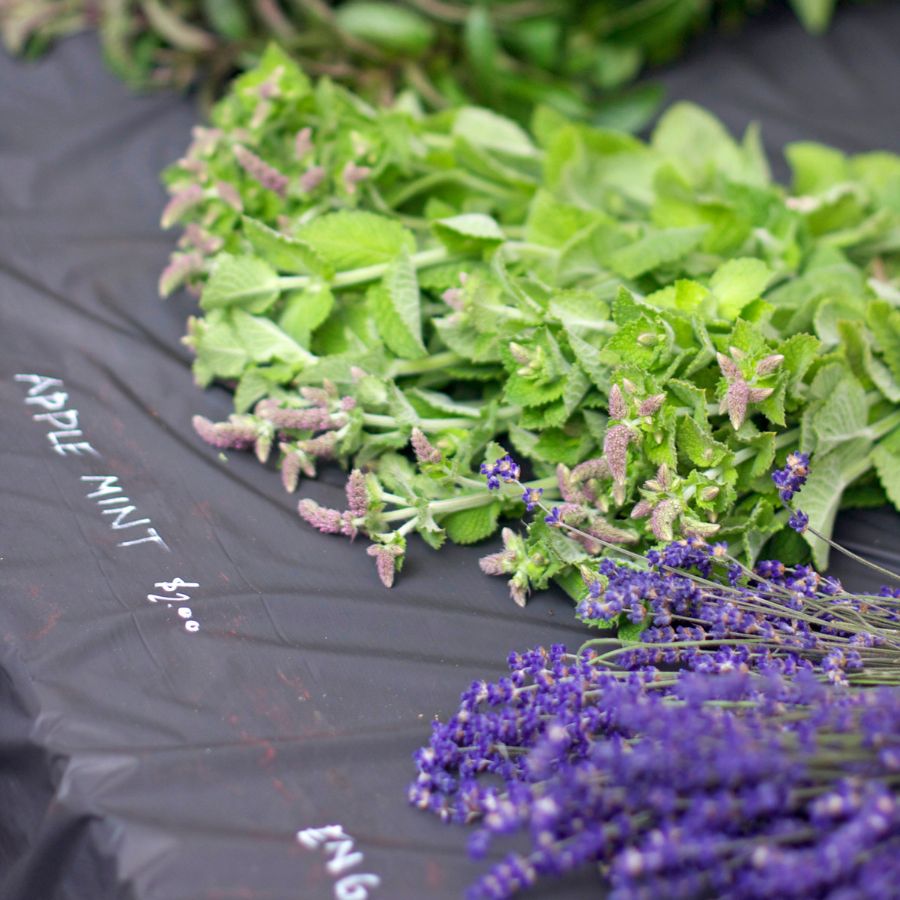
A rare plant isn’t valuable if nobody wants to buy it. If you gather in-demand species like wild ramps or black trumpets, you’re more likely to make a profit. Pay attention to what chefs, herbalists, or vendors are actually looking for.
Foraging with no plan leads to wasted effort and unsold stock. Keeping up with demand helps you bring home a profit instead of a pile of leftovers.
You can also brush up on foraging for survival strategies to identify the most versatile and useful wild foods.
Before you head out
Before embarking on any foraging activities, it is essential to understand and follow local laws and guidelines. Always confirm that you have permission to access any land and obtain permission from landowners if you are foraging on private property. Trespassing or foraging without permission is illegal and disrespectful.
For public lands, familiarize yourself with the foraging regulations, as some areas may restrict or prohibit the collection of mushrooms or other wild foods. These regulations and laws are frequently changing so always verify them before heading out to hunt. What we have listed below may be out of date and inaccurate as a result.
The Most Valuable Forageables in the State
Some of the most sought-after wild plants and fungi here can be surprisingly valuable. Whether you’re foraging for profit or personal use, these are the ones worth paying attention to:
Morel Mushroom (Morchella spp.)
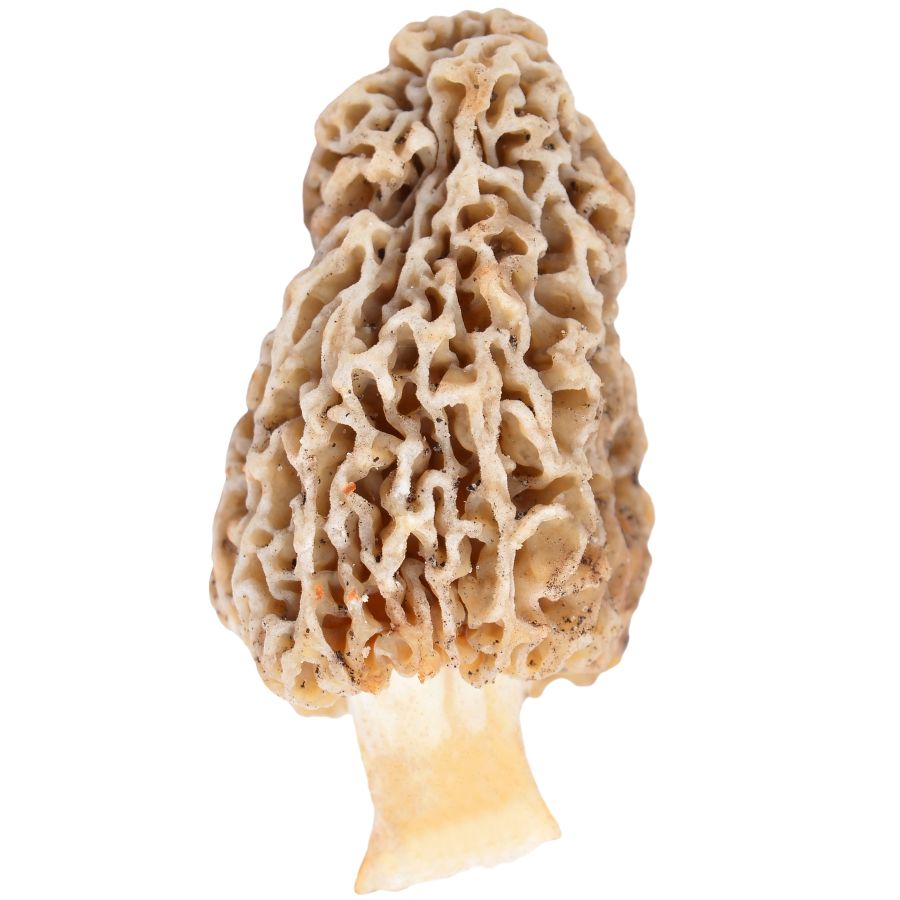
Morel mushrooms have a honeycomb-like surface with deep pits and ridges. The cap is fully attached to the stem, which helps set them apart from dangerous lookalikes like false morels that often have wrinkled, lobed caps and loose or cottony interiors.
The rich, nutty flavor and slightly chewy texture make morels a favorite in high-end kitchens. Many people sauté them in butter, stuff them, or dry them for later use because they hold their flavor extremely well.
Always cook morels thoroughly because raw ones can cause stomach upset, even when they look perfectly normal.
Morels are highly prized by chefs and home cooks, sometimes selling for over $50 per pound fresh and even more when dried.
Part of what makes morels so valuable is how hard they are to cultivate and find. They often grow in specific, unpredictable places, and their short harvesting window drives up both the demand and the price.
Ramp (Allium tricoccum)
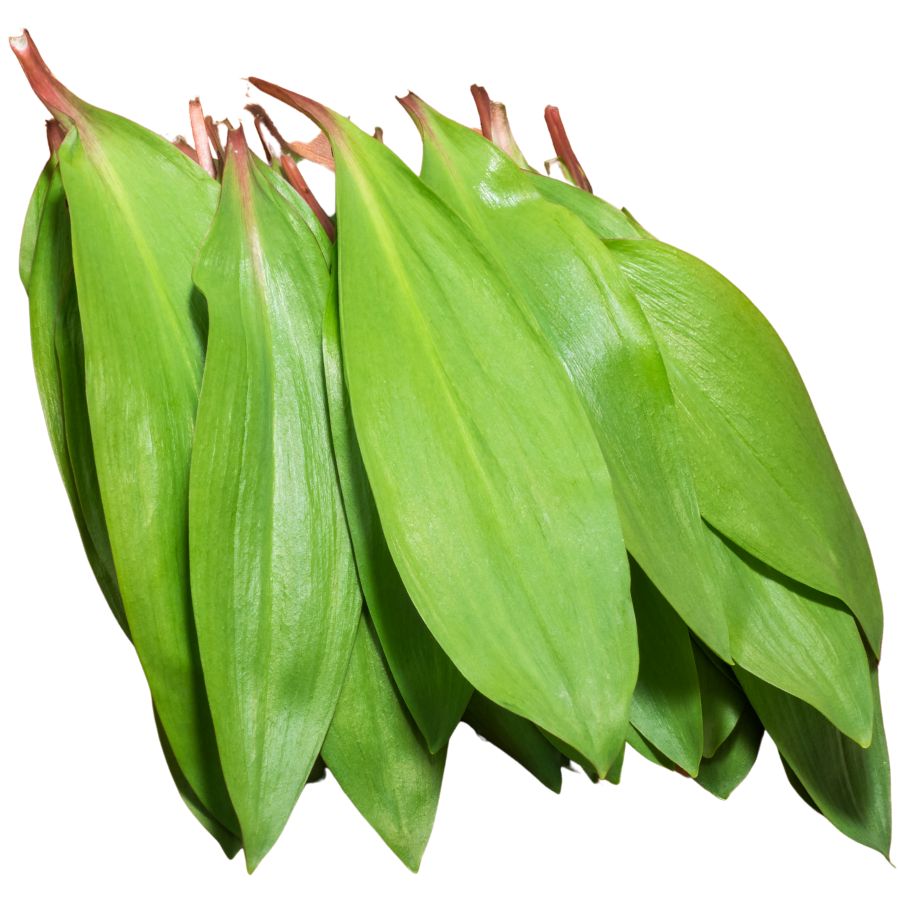
Ramps, often called wild garlic or wild leeks, are a flavorful edible plant prized by chefs and foragers alike. The plant has two or three wide green leaves, a reddish lower stem, and a white bulb with a strong onion-garlic aroma.
Toxic lookalikes like lily of the valley can confuse inexperienced foragers, but ramps always smell distinctly like onion when the leaves are torn. That scent is the easiest and most reliable clue for identification.
Cooks love using ramps in simple sautés, potato dishes, or blended into compound butters. The texture is soft and silky when cooked, while the raw bulbs offer a strong bite.
Their popularity in high-end cooking has made them one of the most expensive wild greens sold in markets. Because entire plants are often pulled for their bulbs, overharvesting has made sustainably gathered ramps even more valuable.
Chanterelle Mushroom (Cantharellus cibarius)
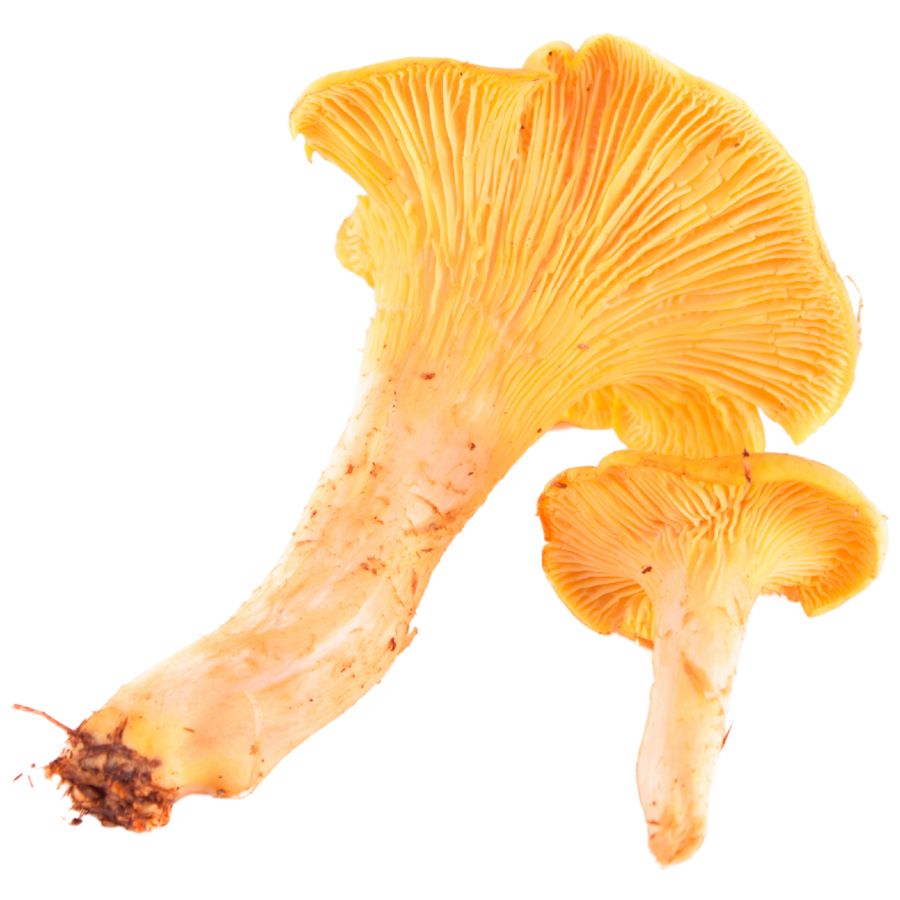
Golden chanterelles, also called egg mushrooms or girolles, are funnel-shaped and usually a bright yellow-orange with false gills that appear as deep, forked wrinkles. They have a fruity smell, almost like apricots, and a dense, meaty texture when cooked.
The part you want is the whole cap and stem, both of which soften nicely in butter or cream-based dishes. Their flavor is rich and peppery, which makes them popular in risottos, sautés, and soups.
A common lookalike is the jack-o’-lantern mushroom, which glows faintly in the dark and has true gills instead of shallow ridges. That one will give you stomach cramps, so pay close attention to the gill structure and color.
Fresh chanterelles can sell for over $20 per pound at farmers markets and restaurants, especially when demand is high. Their shelf life is short, but you can extend it by drying or pickling them soon after harvest.
Maitake (Grifola frondosa)
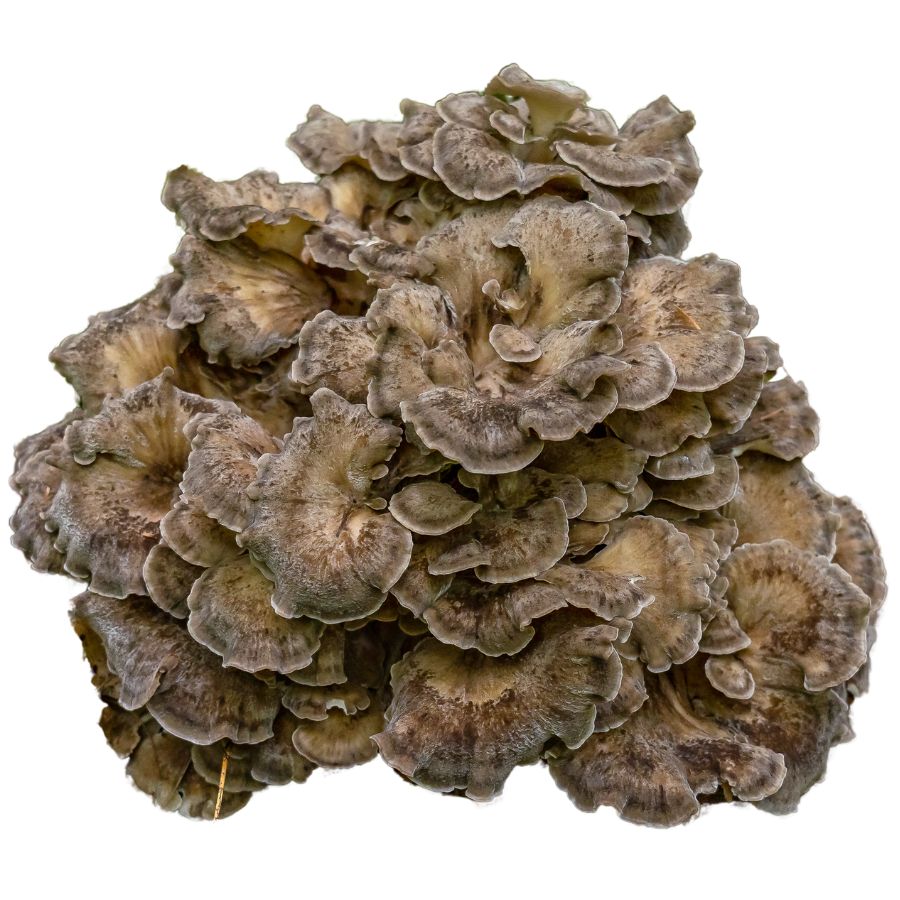
If you’ve ever found a large, leafy-looking mushroom near the base of an oak tree, it might’ve been maitake, also called hen of the woods. The lobes are soft, fan-shaped, and usually grow in a layered cluster that looks like brown petals.
Its flavor is strong and savory, and people often roast or fry it to bring out its concentrated taste. It’s firm when cooked, not spongy, and works well in grain bowls, stews, or simply on its own.
The whole fruiting body is edible, but the base can be fibrous and tough, so most people trim that part away.
While maitake does have a few lookalikes, like the umbrella polypore, most of them are thicker and less delicate in texture.
Fresh wild maitake can fetch high prices at specialty markets, and its shelf life improves dramatically when dehydrated. For those who forage or cook professionally, it’s one of the more valuable mushrooms to find.
Black Walnut (Juglans nigra)
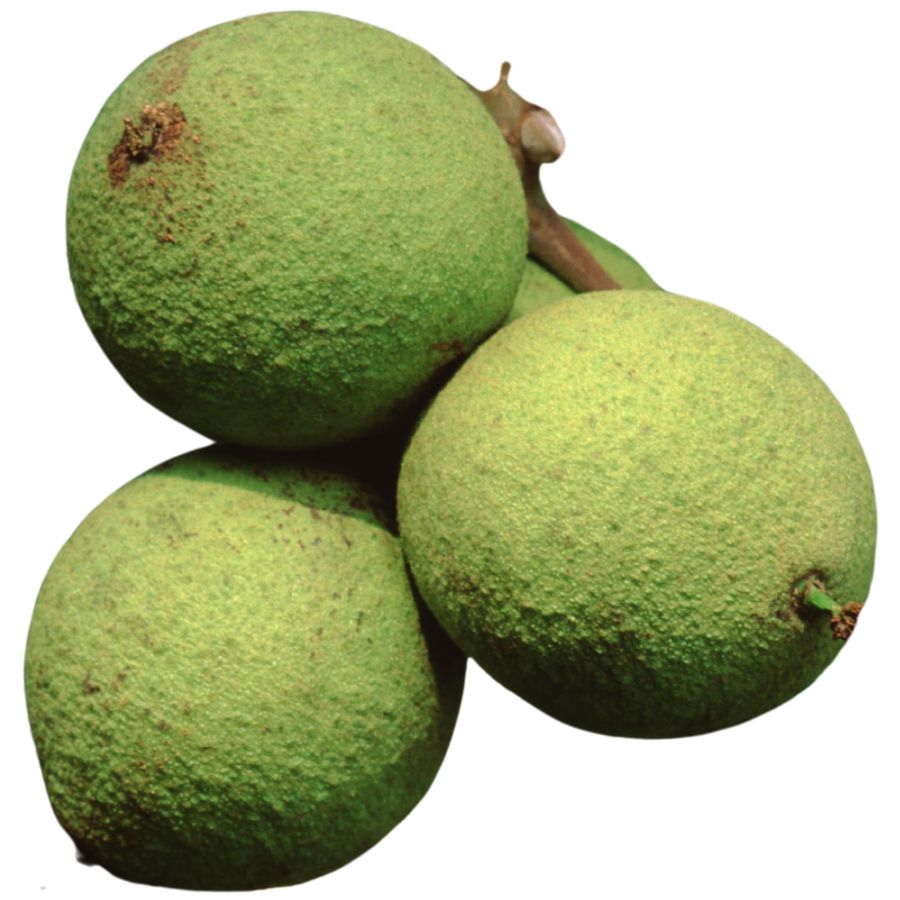
Black walnut grows a nut that’s prized for its strong, musky flavor and crunchy texture. The inner shell is extremely hard and often needs to be cracked with a vise or hammer to reach the oily, wrinkled seed inside.
Its nuts are most often roasted, chopped into desserts, or used in meat rubs and dressings. They’re also one of the few foraged tree nuts that can be stored long-term with very little processing.
The outer green husks leave a dark stain when bruised or broken open, and the nut itself is hidden inside a thick shell. While the fruit of the tree may resemble buckeye at first glance, black walnut leaves have a different shape and pattern, and buckeye seeds are toxic.
Prices stay high because harvesting takes time and experience, and the trees don’t lend themselves easily to large-scale production. Foragers and specialty food makers often pay a premium for wild black walnuts with intense flavor.
Groundnut (Apios americana)

Groundnut grows as a vining plant with compound leaves and reddish-purple flowers, but the part you’re after is buried underground. Its tubers are edible, protein-rich, and surprisingly high in calories compared to most wild plants.
They can be peeled and boiled like potatoes, or slow-roasted to bring out a nutty, slightly sweet taste. Some people mash them or slice them thin to fry into chips.
It’s easy to confuse groundnut with trailing wild beans or other legumes, especially if you’re only looking at the vines. The key difference is the string of bead-like tubers that groundnut sends down into the soil.
These tubers have drawn attention from permaculture growers and chefs for their nutritional value and earthy flavor. While not mass-produced, they can sell for over $15 per pound in niche food markets.
Elderberry (Sambucus canadensis)
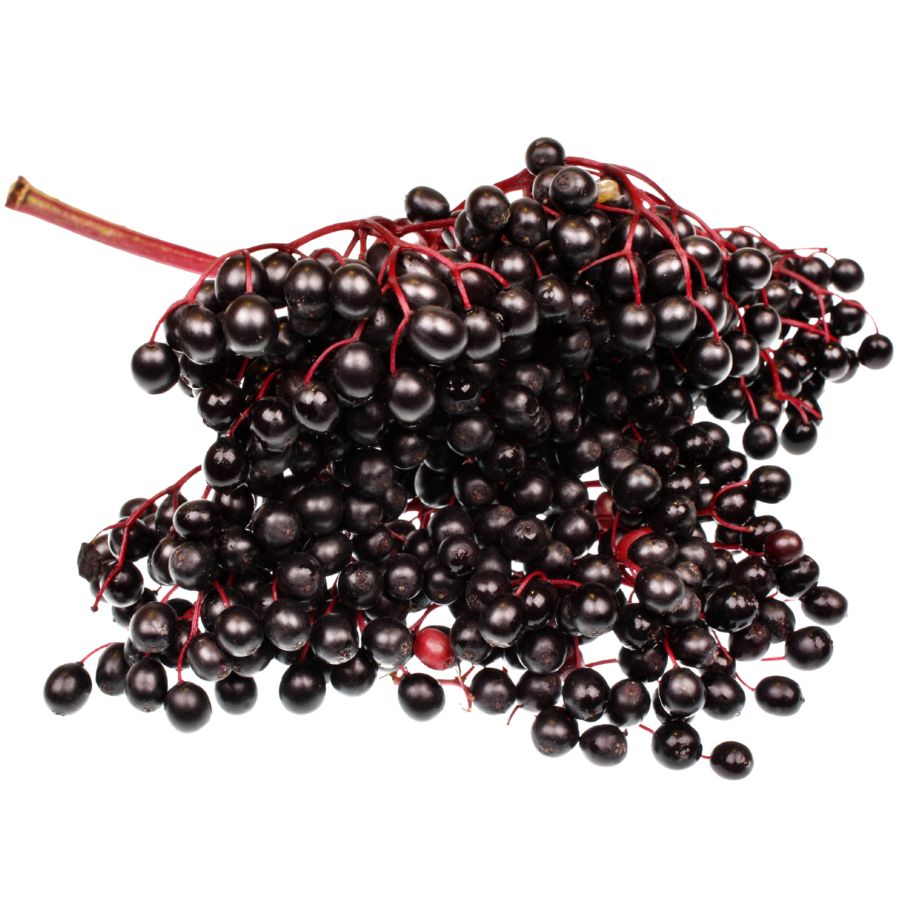
For centuries, elderberries has been gathered not just for food, but for making home remedies prized across the Southwest. Also called Mexican elder and tapiro, elderberry grows as a sprawling bush or small tree with clusters of tiny white flowers that turn into dusty blue-black berries.
There are toxic lookalikes you need to watch for, especially red elderberry, which has round clusters of bright red fruit. Elderberries grow in flatter, broader clusters and have a softer, more powdery appearance when ripe.
The berries have a deep, earthy flavor with a tart edge, and are usually cooked into jams, syrups, and baked goods to bring out their richness.
Make sure to avoid eating the raw berries, seeds, bark, or leaves because they can cause nausea unless they are properly cooked.
This plant stays valuable because the berries are used heavily in teas, tinctures, and syrups that people rely on for wellness, driving steady demand. Elderberries can also be dried and stored for months, making it even more profitable compared to foods that spoil quickly.
Spicebush (Lindera benzoin)
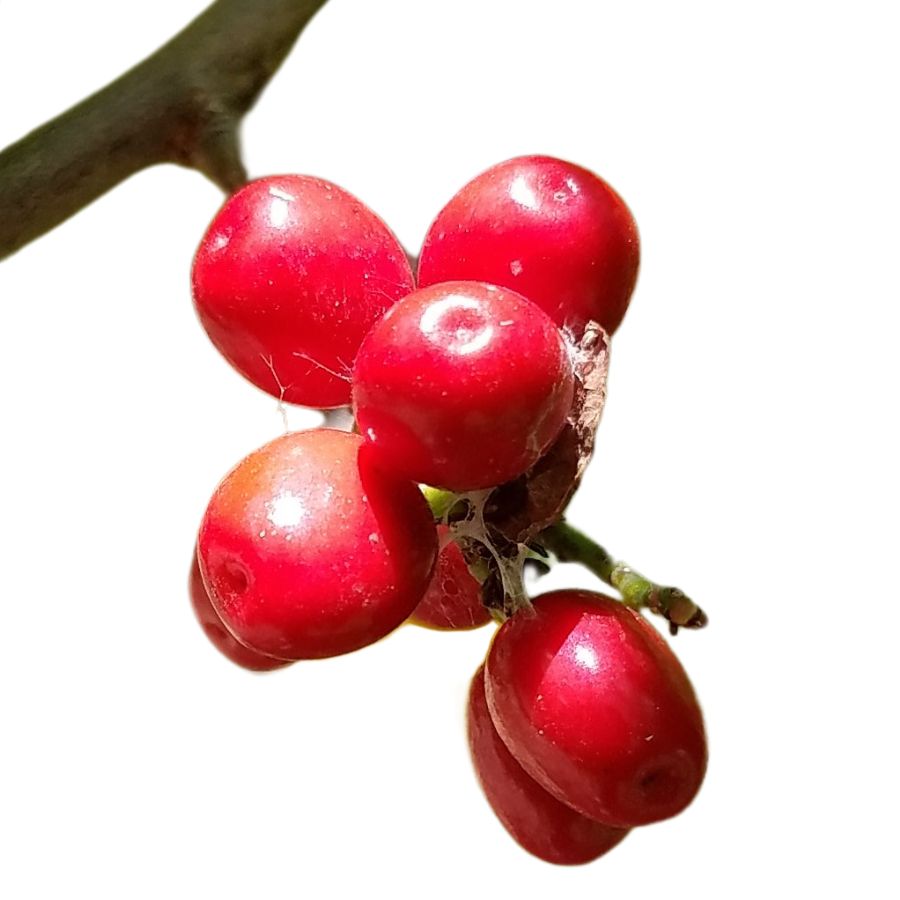
With their bright red color and clustered growth, spicebush berries are easy to pick out once you know the shrub’s distinctive lemon-scented leaves. Some people mix them up with winterberry, but winterberry lacks the spicy scent and has smooth-edged leaves instead of the alternate, veiny ones on spicebush.
The flavor is rich and complex, often described as a cross between black pepper, allspice, and citrus. Foragers usually dry the berries before using them in meat rubs, baked goods, or wildcrafted spice mixes.
Spicebush bark and leaves have traditional uses, but when it comes to edible parts, the berries are what people go after. They’re sometimes steeped whole in broths or ground into powder for stronger flavor.
Because they aren’t cultivated on a large scale, spicebush berries carry a higher value among foragers and food artisans. A small amount can go a long way, especially in recipes that highlight wild-sourced ingredients.
Jerusalem Artichoke (Helianthus tuberosus)
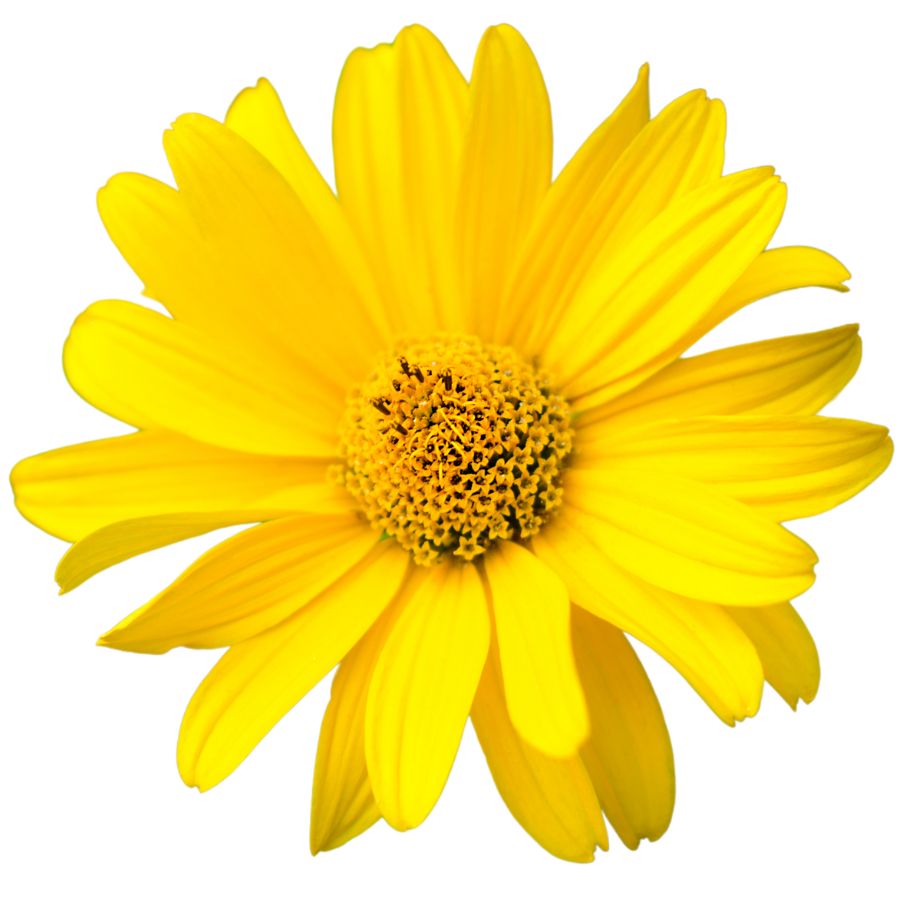
The Jerusalem artichoke is a sunflower relative that grows tall with bright yellow blooms and knobby, potato-like tubers underground. Its underground part is what you eat, while the stems, leaves, and flowers are best left alone.
What makes the tubers interesting is their crisp texture when raw and a nutty, slightly sweet flavor when cooked. They’re often roasted, pureed into soups, or sliced thin for chips.
Some wild sunflowers can look similar, but they don’t form the same type of tubers. If you’re not digging up a bumpy, tan root shaped like ginger, you’re not looking at the right plant.
People value Jerusalem artichokes for their culinary versatility and as a low-starch alternative to potatoes. They sell for a decent price at specialty grocers and farmers markets, especially when freshly dug.
Highbush Cranberry (Viburnum trilobum)
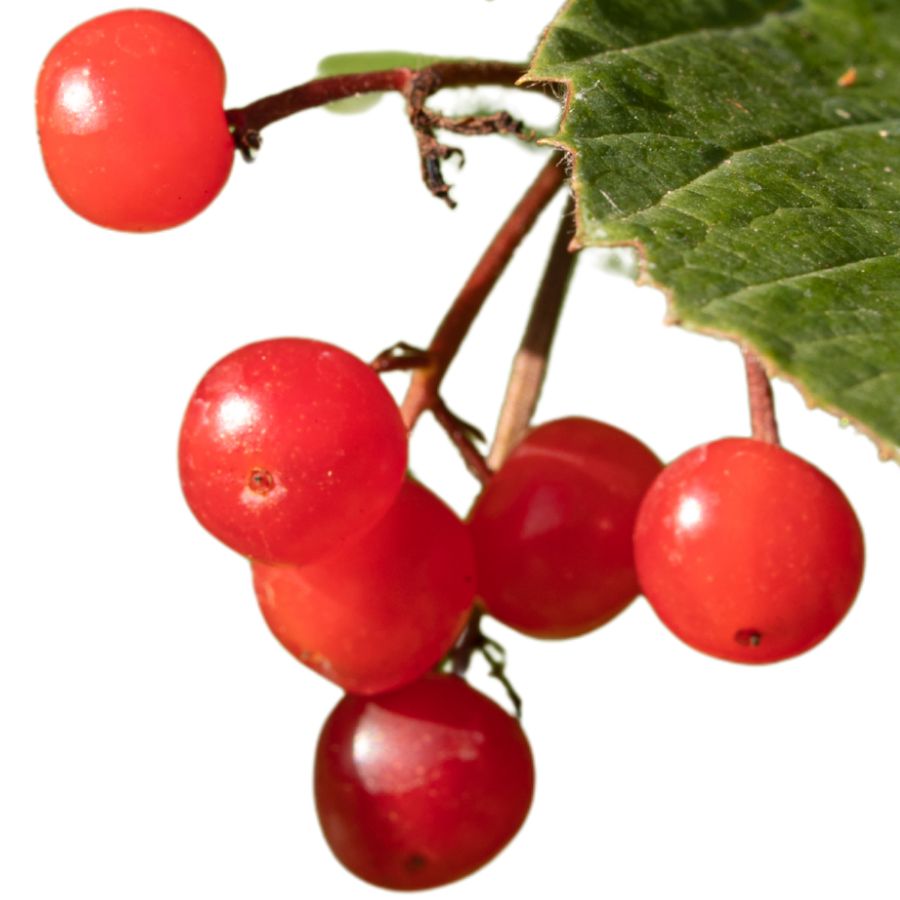
The tart, bright-red fruit of highbush cranberry, also called American cranberrybush, is edible and often turned into jelly or sauce. Despite the name, it isn’t a true cranberry but grows in clusters that resemble them.
Its flavor is sour and a little musky when raw, but cooking mellows the bitterness and brings out a rich, tangy taste. Most people prefer to sweeten it heavily for jams, chutneys, or juice.
The fruit is edible, but the large seed inside isn’t, and the leaves and bark shouldn’t be consumed. One key thing to watch out for is its lookalike, the European cranberrybush, which has similar fruit but a more unpleasant odor and weaker flavor.
What makes highbush cranberry valuable is its popularity in local food markets and traditional recipes, especially in the Upper Midwest. The fresh or processed berries rarely sell high commercially, but they hold cultural and culinary value in certain regions.
American Plum (Prunus americana)
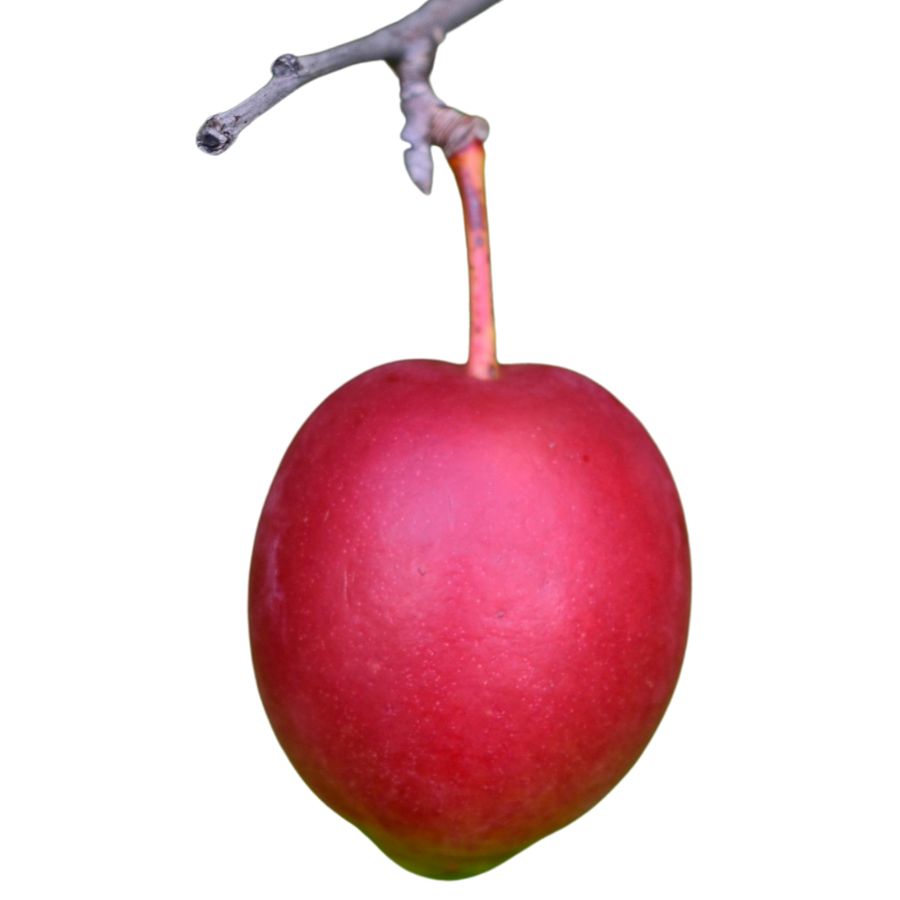
American plums grow on small trees and produce fruit that ranges from deep red to bluish-purple with a waxy coating. The skin is tart and a little astringent, but the flesh inside is sweet, soft, and juicy when fully ripe.
You can eat the fruit fresh, but it’s more often cooked down into jelly, jam, or syrup. The pits are not edible and should always be discarded.
Some cherry species grow in similar clusters, but cherries tend to be smaller, rounder, and darker with smoother bark. American plum leaves also have a rough texture that helps separate them from other lookalikes.
These plums are valuable in small markets, especially when turned into preserves or wine. Individual trees can yield a good harvest, but the fruit is delicate and doesn’t store long.
Beech Nut (Fagus grandifolia)
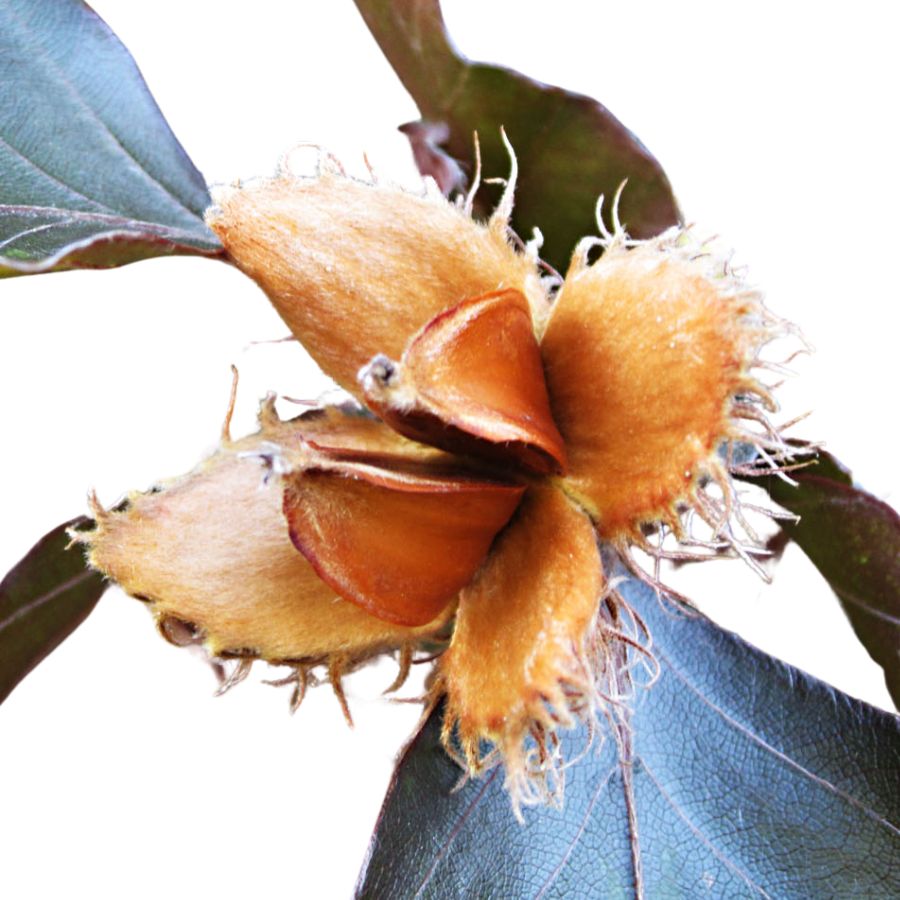
The beech nut is the edible seed of the American beech tree, housed in a bristly husk that splits open to reveal two small, brown nuts. When roasted, the flavor deepens and takes on a nutty richness, almost like mild hazelnut.
You can eat the kernel, but the outer shell should be removed first and raw consumption should be limited due to natural tannins. People usually roast them or grind them into meal to mix with flour.
Chestnut lookalikes have a more rounded, less angular shape and smoother husks, while beech nuts are sharply triangular and sit in spined burrs. That texture is a helpful clue when gathering them.
They’re not commercially valuable because the yield per tree is low and the nuts are tiny, but they’re prized in foraging circles for their flavor and dense nutrition. They contain good amounts of fat and protein, which also makes them useful for wildcraft baking and trail food.
Hickory Nut (Carya ovata)
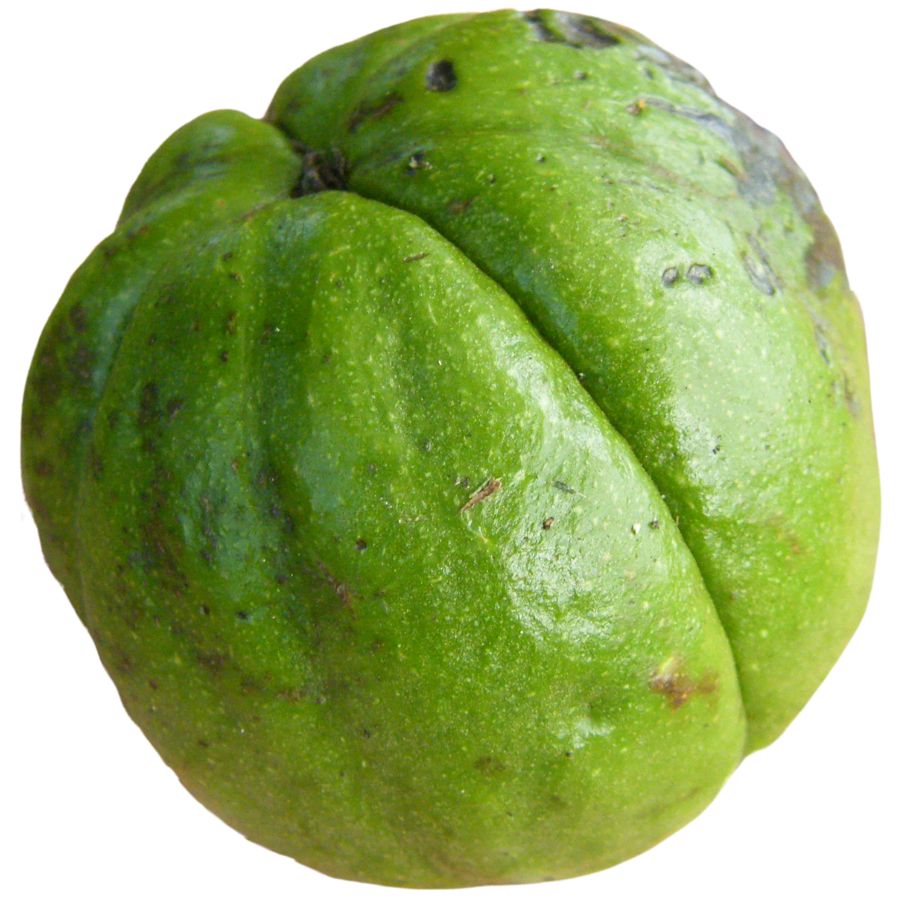
Hickory nuts grow inside a tough outer husk that splits open when the nut is ripe. The tree has compound leaves, and its bark can peel in long strips, especially on the shagbark variety.
The meat inside the nut is rich, sweet, and slightly oily, often compared to pecans but with a deeper flavor. It’s great raw, roasted, or ground into flour for use in traditional baking.
Bitternut hickories produce nuts that look similar but taste unpleasantly bitter and are not considered edible. You can usually tell them apart by the thinner shell and a more oblong shape.
Foragers value hickory nuts for their high energy content and long shelf life, especially after thorough drying. They’re time-consuming to crack, but the payoff can be worth it—shelled nutmeats often sell for premium prices in small-scale markets.
Serviceberry (Amelanchier alnifolia)
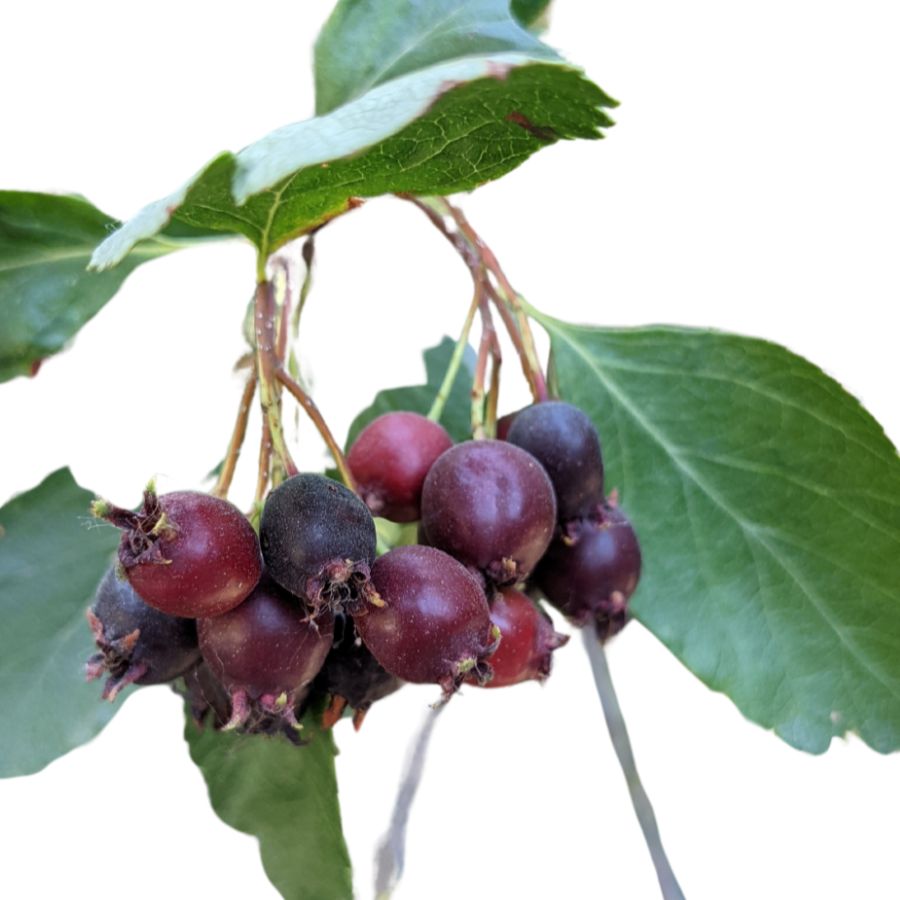
The fruit of serviceberry, also called shadbush or juneberry, looks like a small, purple-blue blueberry with a crown at the tip. It grows on a tall shrub or small tree with oval leaves and smooth gray bark.
You can eat the fruit raw, but it’s also cooked down into syrups, pies, and jellies because of its mild sweetness and soft texture. The taste is often compared to a mix of blueberry and almond.
Some people confuse serviceberry with chokecherry or buckthorn, but serviceberry fruits grow singly or in small clusters, not in long bunches, and the plant has no thorns. Its leaves are finely toothed and not serrated like chokecherry’s.
The fruit has a short shelf life when fresh, but it freezes well and dries into chewy, raisin-like bites. Dried serviceberries were valuable in trade and traditional foodways, and the fresh fruit can still fetch up to $15 per pound at markets.
Wild Strawberry (Fragaria virginiana)
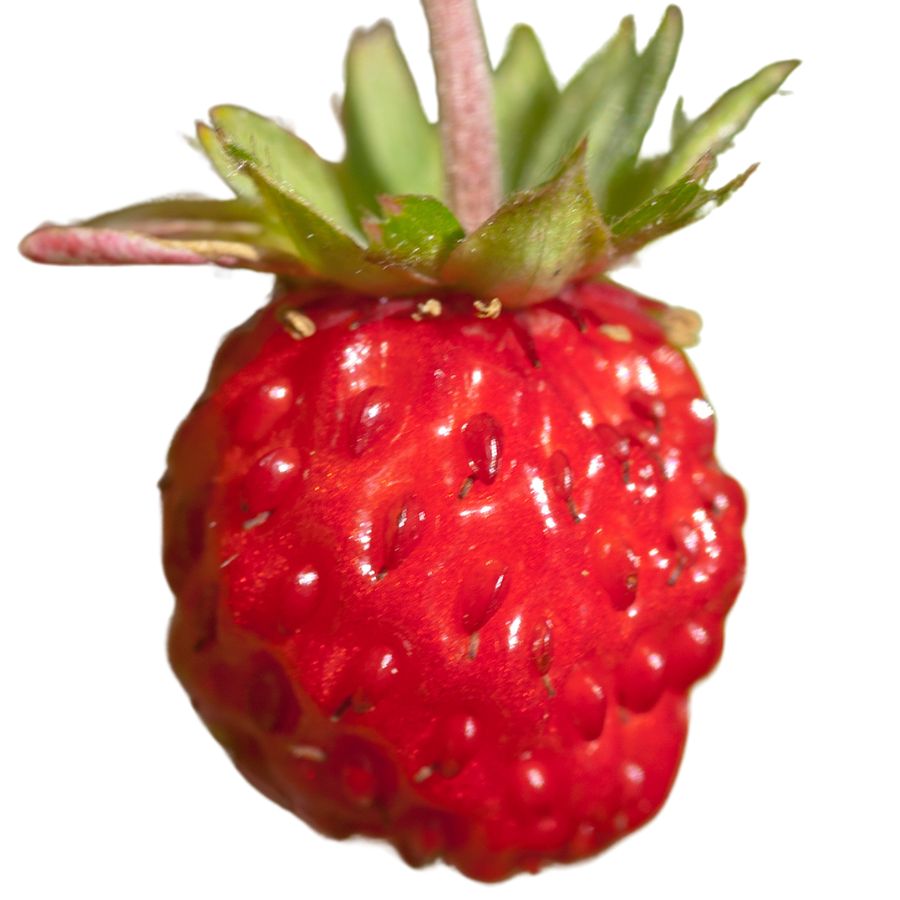
The wild strawberry has five-petaled white flowers and small red fruits that grow close to the ground on thin runners. Its toothed leaves grow in groups of three and are often mistaken for similar-looking plants like mock strawberry, which has yellow flowers and bland, dry fruit.
You can eat the ripe fruit, which has a sweet, concentrated strawberry flavor with a soft, juicy texture. Some people dry or freeze the berries, while others mash them into jam or cook them down into syrup.
The leaves and stems aren’t toxic, but they aren’t typically eaten either. Only the fruit is considered edible and worth harvesting.
Wild strawberries have limited commercial value because they’re small and delicate, but their taste is considered better than many store-bought varieties. That makes them popular in niche markets like gourmet preserves and foraged produce boxes.
Staghorn Sumac (Rhus typhina)
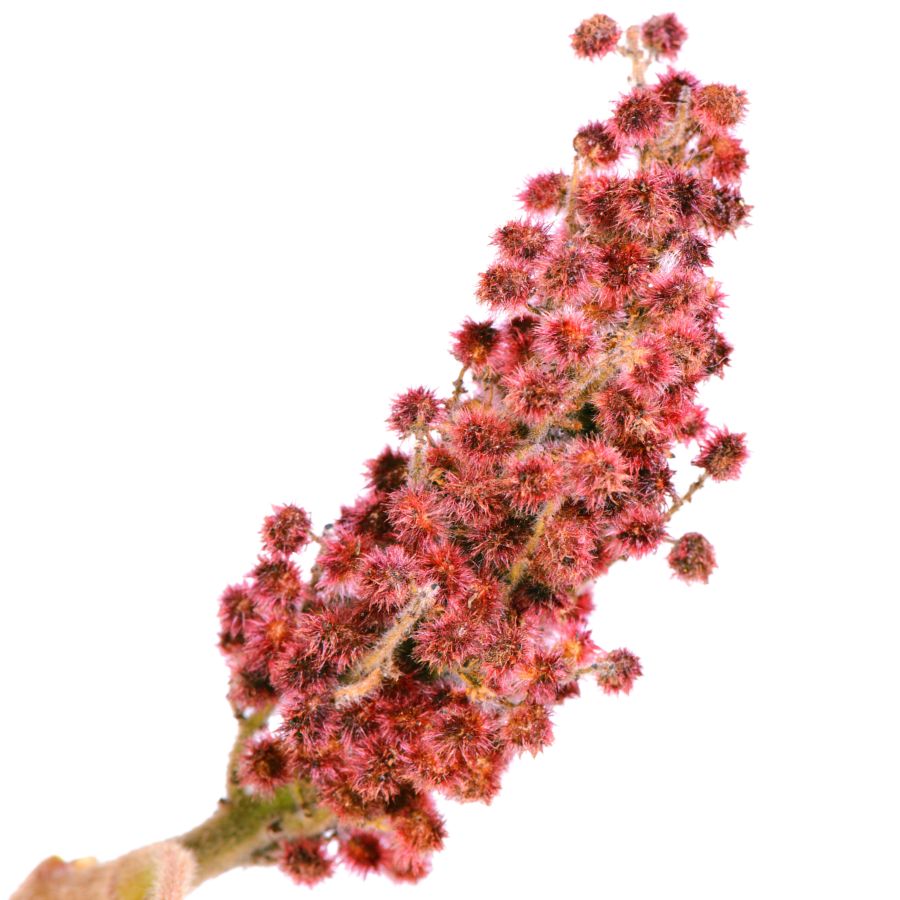
Staghorn sumac produces bright red berry clusters that grow upright and are covered in fine hairs. These berries are soaked in water to extract their tart, citrus-like flavor and then strained to make sumac-ade.
Each fruit cluster contains tiny drupes that are dry to the touch but packed with sour-tasting compounds on the outside. Don’t try to chew them raw since they’re full of hard seeds and not meant to be eaten whole.
Avoid confusing staghorn sumac with poison sumac, which has smooth stems and grows drooping white berries in wet areas. Even though the names sound similar, their habitats and berry color help tell them apart.
Ground sumac made from these berries can sell for several dollars an ounce as a tangy seasoning. It’s especially popular among chefs looking to add brightness without using lemon juice.
Dryad’s Saddle (Cerioporus squamosus)
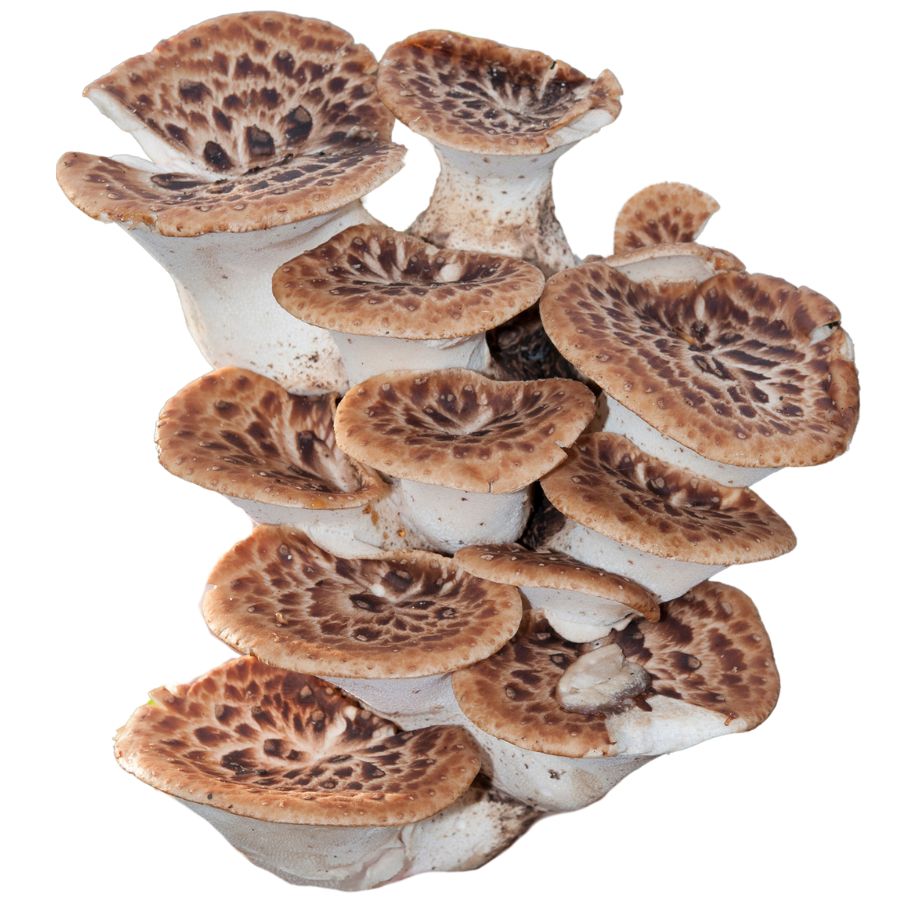
Dryad’s saddle mushrooms grow in fan-shaped clusters and have a tan surface covered in dark brown scales. The cap is thick and firm when young, but quickly becomes tough and leathery as it ages.
The only edible part is the outer edge of young caps, which has a crisp bite and a mild, cucumber-like flavor when cooked. Most people slice it thin and sauté it in butter or oil, sometimes adding it to soups or stir-fries.
Older specimens are usually discarded or used only to make broth because the inner flesh gets too woody to chew.
Always check the underside for white pores rather than gills, which helps separate it from toxic lookalikes.
Although it isn’t considered a gourmet mushroom, it’s valued for its abundance and size, with large caps sometimes weighing several pounds. It has little market value commercially, but it’s worth harvesting for personal use when young and fresh.
Where to Find Valuable Forageables in the State
Some parts of the state are better than others when it comes to finding valuable wild plants and mushrooms. Here are the different places where you’re most likely to have luck:
| Plant | Locations |
| Morel Mushroom (Morchella spp.) | – Pigeon River Country State Forest – Cadillac Area – Grayling Area |
| Ramp (Allium tricoccum) | – Sleeping Bear Dunes National Lakeshore – Leelanau County – Southwest Michigan near St. Joseph |
| Chanterelle Mushroom (Cantharellus cibarius) | – Hartwick Pines State Park – Tahquamenon Falls State Park – Sleeping Bear Dunes National Lakeshore |
| Maitake (Grifola frondosa) | – Porcupine Mountains Wilderness State Park – Pigeon River Country State Forest – Seven Lakes State Park |
| Black Walnut (Juglans nigra) | – Muskegon County – Clare County – Bay County |
| Groundnut (Apios americana) | – Shiawassee National Wildlife Refuge – Pigeon River Country State Forest – Huron-Clinton Metroparks |
| Elderberry (Sambucus canadensis) | – Huron-Clinton Metroparks – Shiawassee National Wildlife Refuge – Bay City State Park |
| Spicebush (Lindera benzoin) | – Pigeon River Country State Forest – Huron-Clinton Metroparks – Shiawassee National Wildlife Refuge |
| Jerusalem Artichoke (Helianthus tuberosus) | – Pigeon River Country State Forest – Shiawassee National Wildlife Refuge – Huron-Clinton Metroparks |
| Highbush Cranberry (Viburnum trilobum) | – Pigeon River Country State Forest – Shiawassee National Wildlife Refuge – Huron-Clinton Metroparks |
| American Plum (Prunus americana) | – Pigeon River Country State Forest – Shiawassee National Wildlife Refuge – Huron-Clinton Metroparks |
| Beech Nut (Fagus grandifolia) | – Porcupine Mountains Wilderness State Park – Pigeon River Country State Forest – Hartwick Pines State Park |
| Hickory Nut (Carya ovata) | – Porcupine Mountains Wilderness State Park – Pigeon River Country State Forest – Hartwick Pines State Park |
| Serviceberry (Amelanchier alnifolia) | – Pigeon River Country State Forest – Shiawassee National Wildlife Refuge – Huron-Clinton Metroparks |
| Wild Strawberry (Fragaria virginiana) | – Pigeon River Country State Forest – Shiawassee National Wildlife Refuge – Huron-Clinton Metroparks |
| Staghorn Sumac (Rhus typhina) | – Pigeon River Country State Forest – Shiawassee National Wildlife Refuge – Huron-Clinton Metroparks |
| Dryad’s Saddle (Cerioporus squamosus) | – Porcupine Mountains Wilderness State Park – Pigeon River Country State Forest – Hartwick Pines State Park |
When to Forage for Maximum Value
Every valuable wild plant or mushroom has its season. Here’s a look at the best times for harvest:
| Plants | Valuable Parts | Best Harvest Season |
| Morel Mushroom (Morchella spp.) | Fruiting bodies (mushrooms) | April – May |
| Ramp (Allium tricoccum) | Leaves and bulbs | April – May |
| Chanterelle Mushroom (Cantharellus cibarius) | Fruiting bodies (mushrooms) | July – September |
| Maitake (Grifola frondosa) | Fruiting bodies (mushrooms) | September – October |
| Black Walnut (Juglans nigra) | Nuts (seeds) | September – October |
| Groundnut (Apios americana) | Tubers | August – October |
| Elderberry (Sambucus canadensis) | Berries and flowers | Flowers: June Berries: August – September |
| Spicebush (Lindera benzoin) | Berries and twigs | Twigs: March – April Berries: August – September |
| Jerusalem Artichoke (Helianthus tuberosus) | Tubers | October – November |
| Highbush Cranberry (Viburnum trilobum) | Berries | September – October |
| American Plum (Prunus americana) | Fruits | August – September |
| Beech Nut (Fagus grandifolia) | Nuts | September – October |
| Hickory Nut (Carya ovata) | Nuts | September – October |
| Serviceberry (Amelanchier alnifolia) | Berries | June – July |
| Wild Strawberry (Fragaria virginiana) | Berries | May – June |
| Staghorn Sumac (Rhus typhina) | Berry clusters (drupes) | July – August |
| Dryad’s Saddle (Cerioporus squamosus) | Fruiting bodies (mushrooms) | April – June |
One Final Disclaimer
The information provided in this article is for general informational and educational purposes only. Foraging for wild plants and mushrooms involves inherent risks. Some wild plants and mushrooms are toxic and can be easily mistaken for edible varieties.
Before ingesting anything, it should be identified with 100% certainty as edible by someone qualified and experienced in mushroom and plant identification, such as a professional mycologist or an expert forager. Misidentification can lead to serious illness or death.
All mushrooms and plants have the potential to cause severe adverse reactions in certain individuals, even death. If you are consuming foraged items, it is crucial to cook them thoroughly and properly and only eat a small portion to test for personal tolerance. Some people may have allergies or sensitivities to specific mushrooms and plants, even if they are considered safe for others.
Foraged items should always be fully cooked with proper instructions to ensure they are safe to eat. Many wild mushrooms and plants contain toxins and compounds that can be harmful if ingested.

